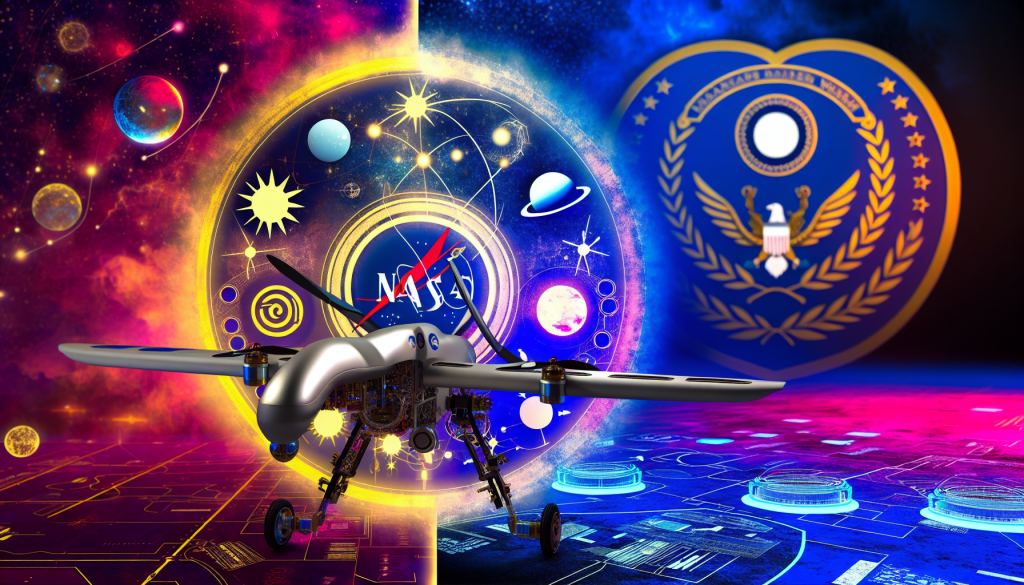Advancing Drone Technology: NASA and the Department of War Collaborate for the Future
In a groundbreaking partnership, NASA and the Department of War are charting a new course for the future of drone technology. This collaboration is focused on enhancing the capabilities of unmanned aerial vehicles (UAVs) to support long-distance cargo transportation. The aim is to increase efficiency, reduce human workload, and most importantly, enhance safety.
Beyond Visual Line of Sight (BVLOS) Demonstration
Recently, researchers from NASA’s Ames Research Center in Silicon Valley participated in a live flight demonstration that underlined the feasibility of beyond visual line of sight (BVLOS) operations for drones. This concept allows UAVs to fly autonomously even when operators cannot see them. During the demonstration, cargo drones successfully transported various payloads over 75 miles, traversing a route between Grand Forks Air Force Base and Cavalier Space Force Station in North Dakota.
This trial was part of the War Department’s UAS Logistics, Traffic, Research, and Autonomy (ULTRA) initiative. By showcasing the capabilities of cargo drones in a real-world environment, the demonstration aimed to validate the safety and effectiveness of BVLOS operations.
The Role of NASA’s UAS Service Supplier Technology
Central to the demonstration was NASA’s UAS Service Supplier (USS) technology, which played a pivotal role in ensuring safe drone operations in complex airspace shared with other aircraft. Throughout the flights, critical data—including location, altitude, and other pertinent information—were transmitted in real-time to NASA’s monitoring systems. This arrangement enabled full situational awareness, a crucial element for managing drone traffic efficiently.
The Federal USS Synthesis Effort (FUSE)
This collaboration between NASA and the Department of War is known as the Federal USS Synthesis Effort, or FUSE. The initiative allowed FUSE researchers to test several aspects crucial to drone traffic management, including real-time tracking and overall situational awareness. The results of these tests mark a significant milestone towards establishing routine, scalable autonomous cargo operations. They also suggest a potential for broader applications in military logistics.
Insights from Collaboration
Todd Ericson, a senior advisor to the NASA administrator, highlighted the historical significance of the partnership between NASA and the Department of War. “FUSE builds upon our interagency cooperation to contribute enhanced capabilities for drones flying beyond the visual line of sight,” he noted. With a keen focus on safety, NASA is collaborating with entities like the FAA and the Department of Transportation to ensure that regulatory measures keep pace with these technological advancements.
Expanding Applications for Autonomous Drones
The capabilities of autonomous and semi-autonomous drones extend far beyond military use. They could revolutionize various sectors, allowing for the transportation of critical medical supplies to remote areas, monitoring wildfires, or enabling prompt customer deliveries right to doorsteps. NASA is actively engaged in researching the infrastructure needed to facilitate these operations safely and effectively, without interfering with existing air traffic.
Emphasizing Safety and Responsiveness
“The system developed through FUSE is crucial for enabling safe, routine BVLOS operations,” stated Terrence Lewis, the FUSE project manager at NASA Ames. He emphasized the importance of stakeholder visibility and responsiveness to drone activity, asserting that this capability offers operators a heightened level of situational awareness.
A Collaborative Approach
NASA Ames is not working in isolation; the FUSE initiative involves the War Department’s Office of the Undersecretary of War for Acquisition and Sustainment. This multi-entity partnership includes the Office of the Secretary of War, the County of Grand Forks, the Northern Plains UAS Test Site, Grand Sky Development, the Air Force Research Laboratory, as well as numerous commercial stakeholders. Together, they aim to strengthen capabilities within the National Airspace System, laying the groundwork for the safe integration of drones into everyday life.
Through this collaboration, NASA and the Department of War are not only pushing the limits of what’s possible in drone technology but are also gearing up to redefine how we view air traffic management and logistics in the 21st century. The ongoing advancements herald a future where drones could play an indispensable role across various sectors, paving the way for a new era in aerial transport.

